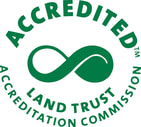Scientific Advisory Board
The Scientific Advisory Board (SAB) advises the Board of Directors on research activities, management of the natural resources of the Preserve and educational programs. The SAB is critical in selecting the Senior Research Fellow at the Preserve, and reviews and selects Huyck Research Grant proposals for awards. The SAB is also available for support and questions about the research done at the Preserve.
Will Eldridge, Ph.D.
Committee Chair
Current position: Aquatic Habitat Biologist, Vermont Fish and Wildlife
Website: https://vtfishandwildlife.com/about-us/department-divisions/meet-the-staff
Ph.D. University of Washington
Dr. Eldridge's research is concerned with understanding and conserving the genetic diversity that is necessary for fish—from individuals to species and entire populations—to adapt to changing environments, thus ensuring their long-term survival.
Website: https://vtfishandwildlife.com/about-us/department-divisions/meet-the-staff
Ph.D. University of Washington
Dr. Eldridge's research is concerned with understanding and conserving the genetic diversity that is necessary for fish—from individuals to species and entire populations—to adapt to changing environments, thus ensuring their long-term survival.
- Identify population boundaries among freshwater fishes for use in management and conservation,
- Investigate the impacts human activities such as hatchery aquaculture, fishing, and thermal pollution are having on the genetic diversity, demographics and stress response in native fish populations
George R. Robinson, Ph.D.
Current Position: Emeritus Associate Professor of Biological Sciences, State University of New York at Albany, Albany NY
Education: Portland State University, Portland, Ore. (B.S. in biology); University of California, Davis (M.S. and Ph.D. in botany)
Website: https://www.albany.edu/news/7800.php
Email: [email protected]
George Robinson, a long-time researcher at the Huyck Preserve, chairs the Scientific Advisory Committee. He has been on the faculty of the University at Albany since 1993 and teaches courses on biodiversity conservation, restoration ecology, plant ecology, biogeography, and introduction to biology. He is also the coordinator of the University at Albany’s Graduate Program in Ecology, Evolution and Behavior, and co-director of the Master's Program in Biodiversity, Conservation and Policy. He is also an associate scientist at the New York State Museum, a visiting scientist with New York State Parks, and a member of the Scientific Working Group of the New York State Biodiversity Research Institute. He is a former chair and treasurer of the New York State Invasive Plant Council and a current member of the Old Songs, Inc., Board of Directors.
Dr. Robinson’s research in restoration ecology involves testing methods for enhancing natural succession in degraded landscapes and studying effects of vegetation on water quality in urban watersheds. His has supervised several graduate theses and dissertations based on research conducted at the Huyck Preserve including studies of forest succession, beech bark disease, stream ecology, and invasive earthworm ecology.
Education: Portland State University, Portland, Ore. (B.S. in biology); University of California, Davis (M.S. and Ph.D. in botany)
Website: https://www.albany.edu/news/7800.php
Email: [email protected]
George Robinson, a long-time researcher at the Huyck Preserve, chairs the Scientific Advisory Committee. He has been on the faculty of the University at Albany since 1993 and teaches courses on biodiversity conservation, restoration ecology, plant ecology, biogeography, and introduction to biology. He is also the coordinator of the University at Albany’s Graduate Program in Ecology, Evolution and Behavior, and co-director of the Master's Program in Biodiversity, Conservation and Policy. He is also an associate scientist at the New York State Museum, a visiting scientist with New York State Parks, and a member of the Scientific Working Group of the New York State Biodiversity Research Institute. He is a former chair and treasurer of the New York State Invasive Plant Council and a current member of the Old Songs, Inc., Board of Directors.
Dr. Robinson’s research in restoration ecology involves testing methods for enhancing natural succession in degraded landscapes and studying effects of vegetation on water quality in urban watersheds. His has supervised several graduate theses and dissertations based on research conducted at the Huyck Preserve including studies of forest succession, beech bark disease, stream ecology, and invasive earthworm ecology.
Matthew Schlesinger, Ph.D.
Chief Zoologist, New York Natural Heritage Program
Adjunct Assistant Professor, SUNY College of Environmental Science and Forestry
Ph.D., Ecology, University of California, Davis, 2007
M.S., Natural Resources and Environment, University of Michigan, 1995
B.A., Wesleyan University, 1992
www.nynhp.org
I am a wildlife ecologist and conservation biologist with broad interests in the distribution, habitat needs, and ecology of animals, particularly vertebrates and insects. At the New York Natural Heritage Program, I am responsible for assessing the conservation status of the state’s animal species and helping ensure that our database of at-risk species locations remains current and accurate. Since arriving at the program in 2007, I have had the good fortune to work on a wide diversity of taxa and conservation problems: distribution and status of the Northeast’s newly identified leopard frog species, NY’s rare tiger beetles, and dragonflies and damselflies of NY and the Northeast; wildlife habitat connectivity modeling in the Hudson Valley; methods for monitoring large whales in the New York Bight; vernal pool biodiversity; and spatial modeling of climate change vulnerability. I have conducted and overseen field surveys for at-risk animals in all parts of the state, including the Adirondacks, Hudson Valley, New York City and Long Island, Fort Drum, Saratoga Sandplains, and Plum Island.
Adjunct Assistant Professor, SUNY College of Environmental Science and Forestry
Ph.D., Ecology, University of California, Davis, 2007
M.S., Natural Resources and Environment, University of Michigan, 1995
B.A., Wesleyan University, 1992
www.nynhp.org
I am a wildlife ecologist and conservation biologist with broad interests in the distribution, habitat needs, and ecology of animals, particularly vertebrates and insects. At the New York Natural Heritage Program, I am responsible for assessing the conservation status of the state’s animal species and helping ensure that our database of at-risk species locations remains current and accurate. Since arriving at the program in 2007, I have had the good fortune to work on a wide diversity of taxa and conservation problems: distribution and status of the Northeast’s newly identified leopard frog species, NY’s rare tiger beetles, and dragonflies and damselflies of NY and the Northeast; wildlife habitat connectivity modeling in the Hudson Valley; methods for monitoring large whales in the New York Bight; vernal pool biodiversity; and spatial modeling of climate change vulnerability. I have conducted and overseen field surveys for at-risk animals in all parts of the state, including the Adirondacks, Hudson Valley, New York City and Long Island, Fort Drum, Saratoga Sandplains, and Plum Island.
Mary Beth Kolozsvary, Ph.D.
Current Position: Associate Professor, Department of Environmental Studies and Sciences, Siena College
Education: SUNY College of Environmental Science and Forestry, Syracuse, NY (BS); Purdue University, West Lafayette, IN (MS); University of Maine, Orono, ME (PhD)
Website: https://www.siena.edu/faculty-and-staff/person/mary-beth-kolozsvary/
Email: [email protected]
Mary Beth Kolozsvary is an Assistant Professor at Siena College and former Biodiversity Scientist with the New York State Biodiversity Research Institute at the New York State Museum. She is an active participant and leader in the Northeast Partners in Amphibian and Reptile Conservation. She has a strong background in wildlife and aquatic biology research and management. She is broadly interested in biodiversity conservation and aquatic ecosystem ecology, and much of her recent research has focused on pool-breeding amphibians and the importance of small, isolated fishless wetlands as key habitats for those species.
Education: SUNY College of Environmental Science and Forestry, Syracuse, NY (BS); Purdue University, West Lafayette, IN (MS); University of Maine, Orono, ME (PhD)
Website: https://www.siena.edu/faculty-and-staff/person/mary-beth-kolozsvary/
Email: [email protected]
Mary Beth Kolozsvary is an Assistant Professor at Siena College and former Biodiversity Scientist with the New York State Biodiversity Research Institute at the New York State Museum. She is an active participant and leader in the Northeast Partners in Amphibian and Reptile Conservation. She has a strong background in wildlife and aquatic biology research and management. She is broadly interested in biodiversity conservation and aquatic ecosystem ecology, and much of her recent research has focused on pool-breeding amphibians and the importance of small, isolated fishless wetlands as key habitats for those species.
Kerry David Woods, Ph.D
Current Position: Professor, Natural Sciences, Bennington College, Bennington, VT
Education: Illinois College, Jacksonville, Illinois (B.S. in physics and biology); Cornell Univ., Ithaca, N.Y. (Ph.D. in ecology and evolutionary biology)
Website: http://faculty.bennington.edu/~kwoods/
Email: [email protected]
Kerry Woods, who has been a member of the Huyck Preserve’s Scientific Advisory Committee since 2000, is a plant community ecologist interested in the long-term dynamics of late-successional (old-growth) forests of northeastern North America. He has been on the faculty of Bennington College since 1986 and teaches ecology, evolution, and field biology. He is the Director of Research at the Ives Lake Field Station of the Huron Mountain Wildlife Foundation in northern Michigan. The station provides access to large tracts of old-growth forests and several pristine lakes. He also serves as an editor for the Ecological Society of America and the International Association for Vegetation Science, and in 2007 he chaired the national meetings of Ecological Society of America.
“Many of the most important research problems in ecology call for long-term research in natural systems,” says Dr. Woods. “Sites with diverse or uncommon ecosystems [that are] permanently dedicated to a research mission are very few indeed. The Huyck Preserve is one of those few; researchers can establish studies here fully confident that they can return to undisturbed research sites in the future.”
Education: Illinois College, Jacksonville, Illinois (B.S. in physics and biology); Cornell Univ., Ithaca, N.Y. (Ph.D. in ecology and evolutionary biology)
Website: http://faculty.bennington.edu/~kwoods/
Email: [email protected]
Kerry Woods, who has been a member of the Huyck Preserve’s Scientific Advisory Committee since 2000, is a plant community ecologist interested in the long-term dynamics of late-successional (old-growth) forests of northeastern North America. He has been on the faculty of Bennington College since 1986 and teaches ecology, evolution, and field biology. He is the Director of Research at the Ives Lake Field Station of the Huron Mountain Wildlife Foundation in northern Michigan. The station provides access to large tracts of old-growth forests and several pristine lakes. He also serves as an editor for the Ecological Society of America and the International Association for Vegetation Science, and in 2007 he chaired the national meetings of Ecological Society of America.
“Many of the most important research problems in ecology call for long-term research in natural systems,” says Dr. Woods. “Sites with diverse or uncommon ecosystems [that are] permanently dedicated to a research mission are very few indeed. The Huyck Preserve is one of those few; researchers can establish studies here fully confident that they can return to undisturbed research sites in the future.”


